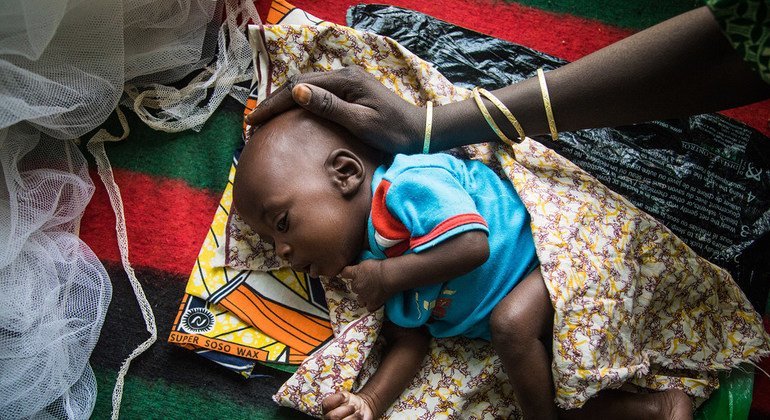[ad_1]
More than seven million children under the age of five remain malnourished and in need of urgent nutrition aid, and over 1.9 million boys and girls* are at risk of dying from severe malnutrition.
As the region comes out of one of the worst droughts in 40 years, vulnerable communities have lost cattle, crops, and entire livelihoods over the past three years of failed rains.
“The crisis in the Horn has been devastating for children,” said Mohamed Fall, UNICEF Regional Director for Eastern and Southern Africa.
“Over the past three years, communities have been forced to take extreme measures to survive, with millions of children and families leaving their homes out of pure desperation in search of food and water. This crisis has deprived children of the essentials of childhood – having enough to eat, a home, safe water, and going to school.”
Deadly consequences
While the rains postponed the worst, they have also led to floods, as the extremely thirsty ground is unable to absorb large quantities of water, leading to further displacement, increased risk of disease, livestock loss and crop damage.
In Somalia, the rains have caused floods that have damaged homes, farmland, and roads, as well as washed away livestock and led to closures of schools and health facilities.
Initial estimates indicate that the flash and riverine floods across the country have affected at least 460,470 people, of whom nearly 219,000 have been displaced from their homes mainly in flood-prone areas, and 22 killed.
Floods have also caused widespread destruction and displacement in several regions of Ethiopia.
The flooding has deepened the vulnerability of populations already highly affected by the drought as the areas hit hardest by flooding and drought overlap.
The floods have also worsened health risks, including cholera, with the current outbreak among the longest ever recorded in Ethiopia.
“The rains have brought some relief and hope, but also new threats, and recovery doesn’t happen overnight,” said Mr. Fall. “It takes time for crops and herds to grow again, for families to recover from years of hardship. That’s why continued support is still critical.”
Domino effect
Across the region, 23 million people are facing high levels of acute food insecurity in Ethiopia, Kenya, and Somalia. The number of severely malnourished children seeking treatment in the first quarter of this year remains much higher than last year and will likely remain high for quite a while.
On top of nutrition needs, extreme weather, insecurity, and scarcity have also had devastating consequences for women and children, worsening the risk of gender-based violence (GBV), sexual exploitation and abuse.
A path to recovery
Major outbreaks including cholera, measles, malaria, and other diseases are ongoing across the region, worsened by extreme weather conditions and fragile health systems. Food prices remain high in local markets, burdening children, and families. The climate crisis is compounding the severity of the situation, worsening mass displacement, malnutrition, and disease.
Mr. Fall underlined the need for greater funding. Thanks to donor support, UNICEF was able to provide services for the prevention of malnutrition to over 30 million children and mothers in 2022.
“This year, further flexible funding will not just help children recover from a crisis of this magnitude, but also go towards developing more resilient, sustainable systems for children in the region, that can withstand future climate impacts and other shocks,” he said.
“With the extreme weather cycles that we see today in the Horn of Africa, the next crisis may hit before children and families have had a chance to recover,” he added.
[ad_2]
Source link



